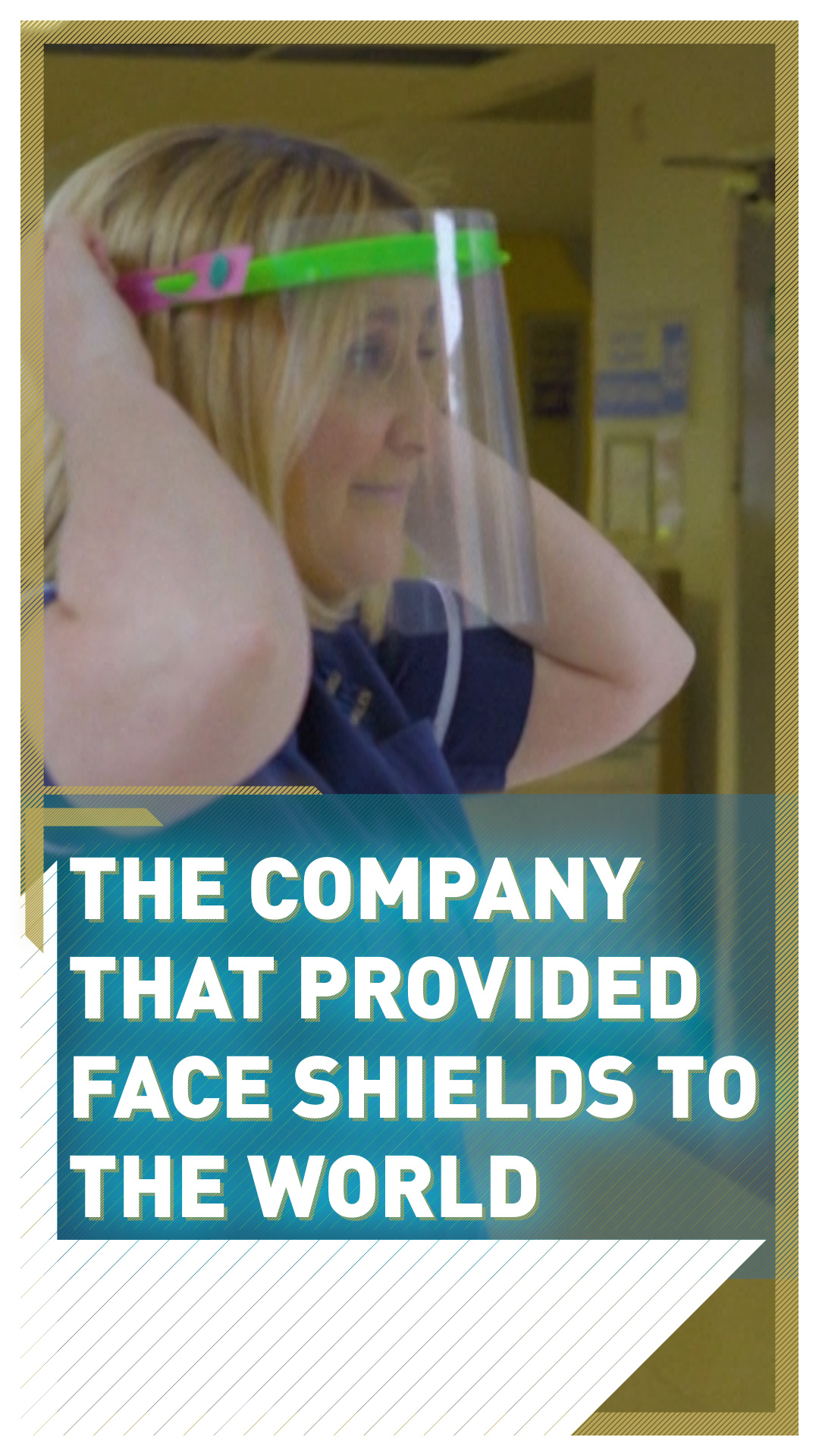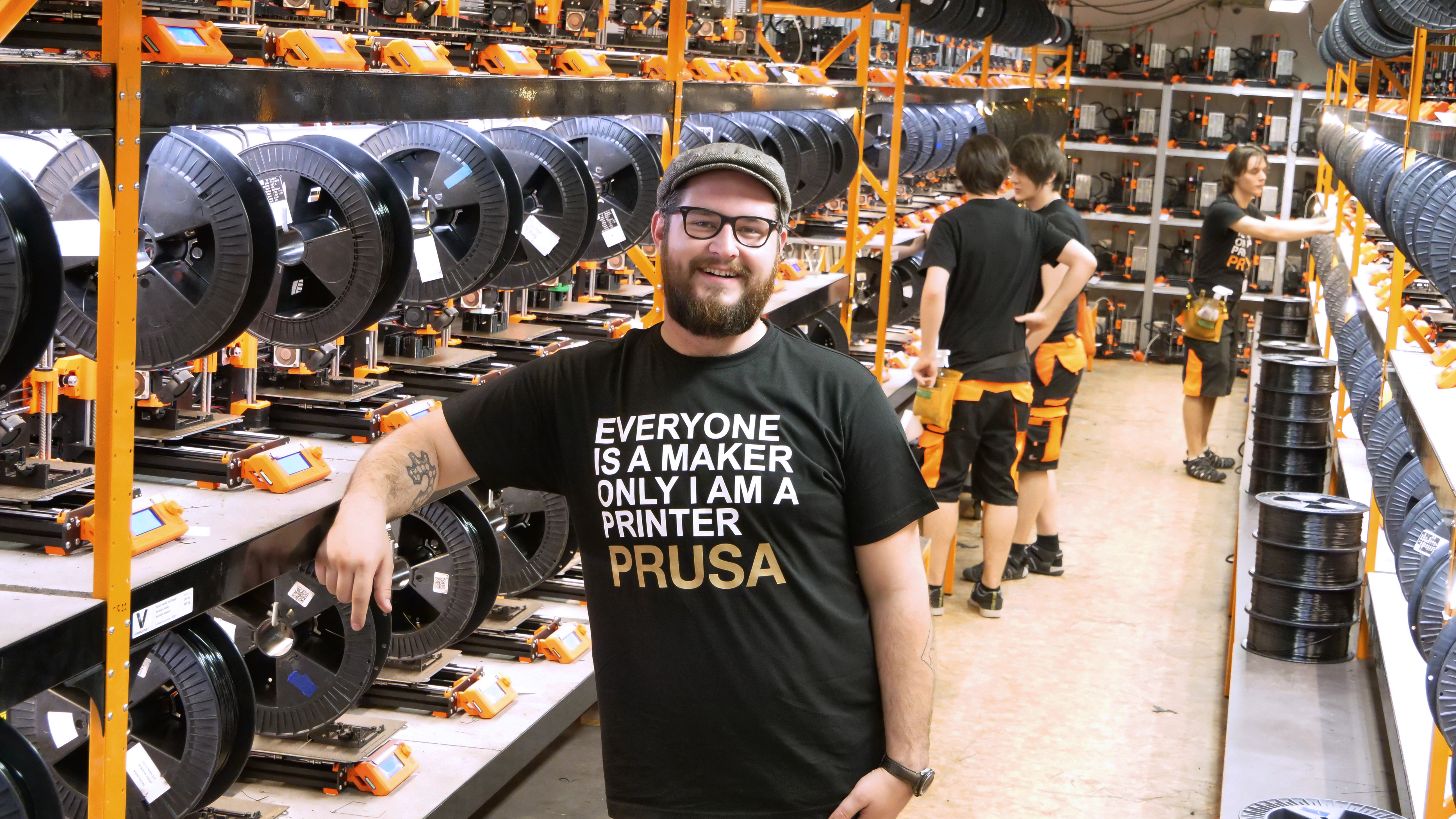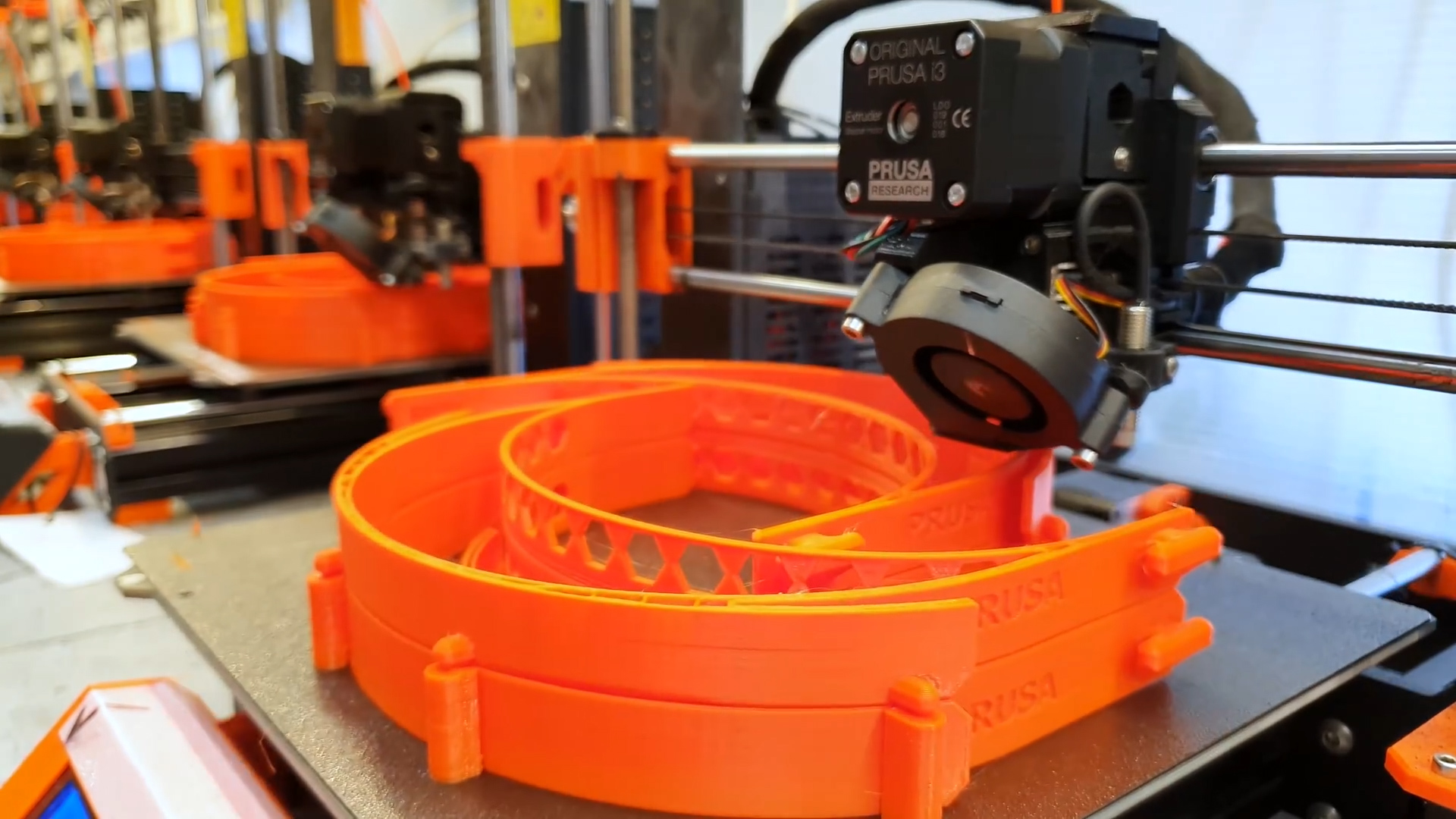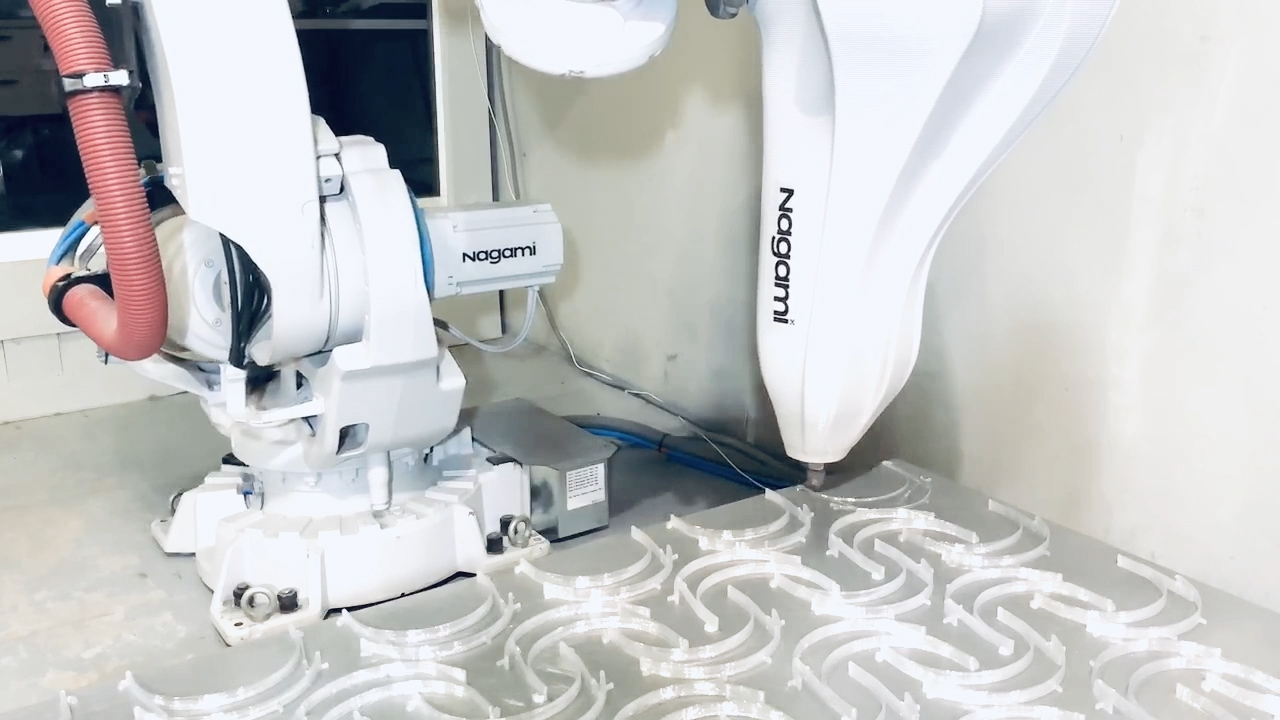03:41

As the numbers of COVID-19 cases skyrocketed at the beginning of the pandemic, healthcare workers around the world worried that they would run out of personal protective equipment (PPE).
One of the reasons it did not happen was that people started 3D printing face shields, which they then donated to front-line healthcare workers in an attempt to alleviate this problem.
Many of these people were using the same blueprint for face shields, from a 3D printing company in Czechia called Prusa Research.
"As the pandemic came ... we knew that we wanted to help out," Josef Prusa, the CEO of Prusa Research, told CGTN Europe.
"But we didn't want to do something just so we can say, 'oh, we helped.'
"We wanted to do something very meaningful."

Josef Prusa at his 3D printing company in Czechia. /Prusa Research/
Josef Prusa at his 3D printing company in Czechia. /Prusa Research/
Prusa and his team quickly decided they wanted to provide a blueprint for face shields online because they are easy to produce and have a low chance of construction error.
"I realized that it is the thing which we will be doing. We have all the tools, so we can do everything in-house," he said.
"And in the meantime, I got in touch with the Czech Ministry of Health because we wanted to do it properly.
"Do our homework. So, we knew that what we create is actually useful in the field."
Find out more about life saving collaborations during the pandemic by listening to our podcast: Notes on a Pandemic
Prusa Research currently sells 3D printers in more than 130 countries.
The company's design was downloaded more than 250,000 times and was used by companies including car makers Ford and Mercedes-Benz.
Prusa printed and donated more than 200,000 shields in Czechia alone.

A 3D printer creating a face shield at Prusa Research. /Prusa Research/
A 3D printer creating a face shield at Prusa Research. /Prusa Research/
Another company that downloaded and used the open-source template was Nagami Design in Spain.
The furniture design studio is based near Madrid and has worked with award-winning architects such as Zahid Architects.
"We've got friends who are working in the health sector, who were texting [us]. [They had] seen some examples online of things that were happening in Italy and asking if we could do something," said Manuel Jiménez García, one of the founders of Nagami Design.
Between March and June, Nagami Design used its 3D printers in its factory to produce one shield every five minutes, or 500 per day.
Volunteers then delivered the face shields by hand to Madrid or other nearby cities.
The process of switching its 3D printers to produce face shields, instead of designer chairs, was its biggest challenge.

A 3D printer in Nagami's factory creating face shields. /Nagami Design/
A 3D printer in Nagami's factory creating face shields. /Nagami Design/
"Because the geometry of [face shields] is quite simple, we could do this redesigning process relatively fast. But I think automating the batch production of these objects was slightly tricky as well," García said.
"We are used to printing one chair and then just finish that chair … and in here we had to program [the machine to] jump from one object to another ... so that we don't have to be present and attending the robots every five minutes.
"But I think there are more opportunities in that challenge than problems … we're starting to see that it's more necessary to install a conveyor belt so that we can produce more objects in an automated manner.
"So many interesting opportunities just opened up after facing these challenges."
Prusa, while proud of the work he and his company did during the pandemic, said he wished his contribution hadn't been necessary.
"It is a bittersweet experience," he said.
"I'm of course extremely proud that we've been able to do this. But on the other hand, it is a little bit of sour experience from the point – why should companies like us who have nothing to do with healthcare, why should we have to save the supplier chain or the stockpiles of the countries?"
Video editing: David Bamford. Graphics: James Sandifer.